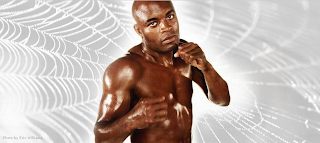
(1) Wrestling
There may be no better foundational art than free-style or Greco Roman wrestling. Wrestling provides excellent balance because of the low center of gravity in it's stances and it is very easily combined with other grappling and even striking arts. Wrestlers are some of the most well conditioned athletes in the world and the mental discipline it provides is second to none. There are very few styles that produce tougher fighters than wrestlers. You can beat a wrestler senseless and they won't quit. They make you quit. Although there are many grappling arts around the world, the take downs in wrestling are by far the best. Another advantage is emotional content in the execution of technique. many fighting styles produce fighters with good technique who lack conviction. Wrestlers put conviction behind every movement. When they take you down, they run right through you and take you to the mat hard. Their sense of competitiveness is visual in every action. In short, wrestlers are dangerous and are usually the fastest to pick up other martial arts. Joe Lewis and Bill Wallace, though famous for their kickboxing careers, both share wrestling as their foundational art. Other phenomenal wrestlers or wrestling based fighters in the martial arts game include George St. Pierre, Matt Hughes, and Chael Sonnen.

(2) Boxing
When it comes to foundational arts, few compare to "the sweet science". Perhaps the most technically advanced and scientific fighting art, boxing is the premiere example of a style in which everything works. Boxing provides the best footwork in sports and because it features only four techniques, the jab, cross, hook, and uppercut, it relies heavily on the use of good strategy. Boxing utilizes feints and faking on a higher level than most fighting arts. Boxer's are also very fast in comparison with many other fighters. And then there's defense. The head rolls, body rolls, shoulder rolls, slips, bobs and weaves of boxing provide better defensive skills than any other style. It is incredibly hard to hit a well trained boxer. And the training grind in the sport of boxing is more intense than most athletic endeavors. All of this, combined with boxing's brilliant use of the jab, which may be the single best technique ever created, make the practice of pugilism one of the best foundation arts there is. It has served as my foundation art since I began the study of combat at age fourteen. History's best boxers include Muhammad Ali, Sugar Ray Robinson, and Willie Pep. One of today's best boxers is current world champion (in eight devisions) Manny Paquiao, and one of UFC's most advanced boxers is current lightweight world champion, Frankie "The Answer" Edgar.

(3) Muay Thai
Undoubtedly, Muay Thai produces some of the toughest fighters in the world. The mentality of Thai fighters finds it's roots in the art's home country of Thailand, where the fighters don't visit the gym every day, but live there. Alongside wresting, Muay Thai produces the toughest fighters I've ever seen. Even if you kill a Thai fighter, his zombie will knock you out. Muay Thai is similar to boxing with several major differences: elbows, knees, kicks, and a vice like clinch. And Muay Thai people don't kick like point fighters, they turn the hip over before releasing the kick for maximum power. And when it hits you, it hits with the shin bone, often targeted to the cutaneous femoral and sciatic nerves in your leg. Elbows are designed to cut across the eyebrows. The knee strikes will break your ribs, cheek bones and nose. Thai fighters are disciplined to fight through these types of injuries, regardless of pain. Muay Thai provides effective technique that is safe for the user, dangerous to the target, and easy to integrate into other disciplines. One of the best Muay Thai fighters in mainstream martial arts today is current UFC middleweight world champion, Anderson "The Spider" Silva.

(4) Brazilian jiu-jitsu
Out of no where in 1993, Brazilian jiu-jtsu practitioners collectively known by their family name, Gracie, shocked the world with a new and dangerous martial art. Wrestling may be the best art for putting people on the ground, but Brazilian jiu-jitsu is by far the best for making sure they don't get back up, at least not without your permission. Brazilian jiu-jitsu wastes no time with ineffective techniques or disciplines, it's all business. Using leverage to lock joints or manipulate your way into a submission, this art is subtle, the smallest advantage leading to victory and the smallest mistake leading to defeat. Brazilian jiu-jitsu has changed much since it's world debut in 1993, but a few things have remained the same: it's dangerous, scientific, versatile, and a great foundation art. Just like boxing, you can use feints and fakes. Instead of faking a punch one way and redirecting it, you could fake a punch and execute a take down, or bait your opponent with false attempts to gain half guard only to pivot into full guard on the other side. It's easy to see how you can blend this with other fighting styles. Some of the best Brazilian jiu-jitsu practitioners in the world include the Gracies, the Muchado brothers, and B. J. Penn.
Keep in mind, any martial art can be put to use as a foundation art. But it's easier to work with arts that allow you to learn and progress instead of spending time identifying and cutting out the useless stuff. You should pick an art that follows this criteria and fits your own personal fighting mentality. Then blend it with other useful arts to better round out your fight game. For instance, the four arts above can be meshed seamlessly: fake a jab, cut kick the leg and execute a take down, pass the guard and apply a submission. Get the idea?





